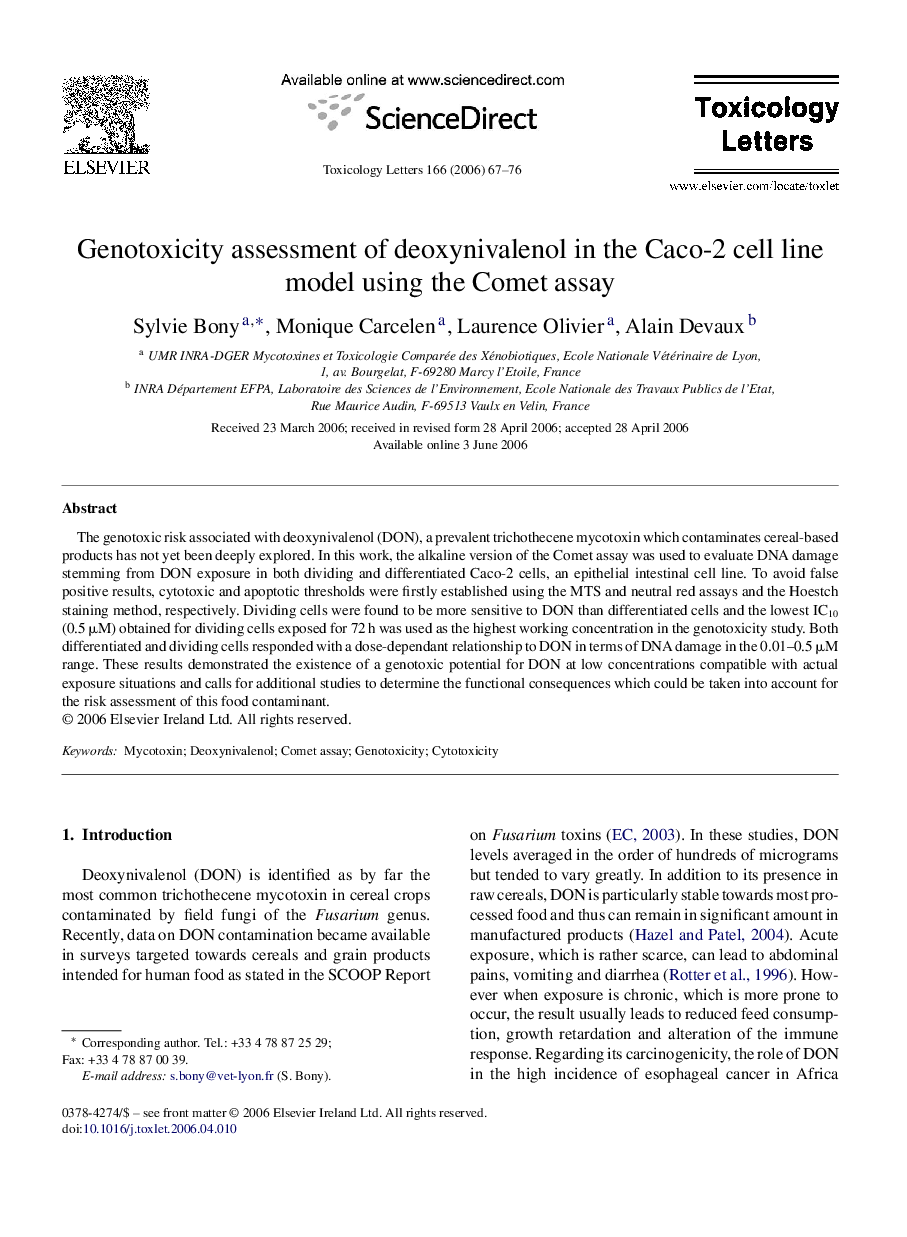| Article ID | Journal | Published Year | Pages | File Type |
|---|---|---|---|---|
| 2602339 | Toxicology Letters | 2006 | 10 Pages |
The genotoxic risk associated with deoxynivalenol (DON), a prevalent trichothecene mycotoxin which contaminates cereal-based products has not yet been deeply explored. In this work, the alkaline version of the Comet assay was used to evaluate DNA damage stemming from DON exposure in both dividing and differentiated Caco-2 cells, an epithelial intestinal cell line. To avoid false positive results, cytotoxic and apoptotic thresholds were firstly established using the MTS and neutral red assays and the Hoestch staining method, respectively. Dividing cells were found to be more sensitive to DON than differentiated cells and the lowest IC10 (0.5 μM) obtained for dividing cells exposed for 72 h was used as the highest working concentration in the genotoxicity study. Both differentiated and dividing cells responded with a dose-dependant relationship to DON in terms of DNA damage in the 0.01–0.5 μM range. These results demonstrated the existence of a genotoxic potential for DON at low concentrations compatible with actual exposure situations and calls for additional studies to determine the functional consequences which could be taken into account for the risk assessment of this food contaminant.
